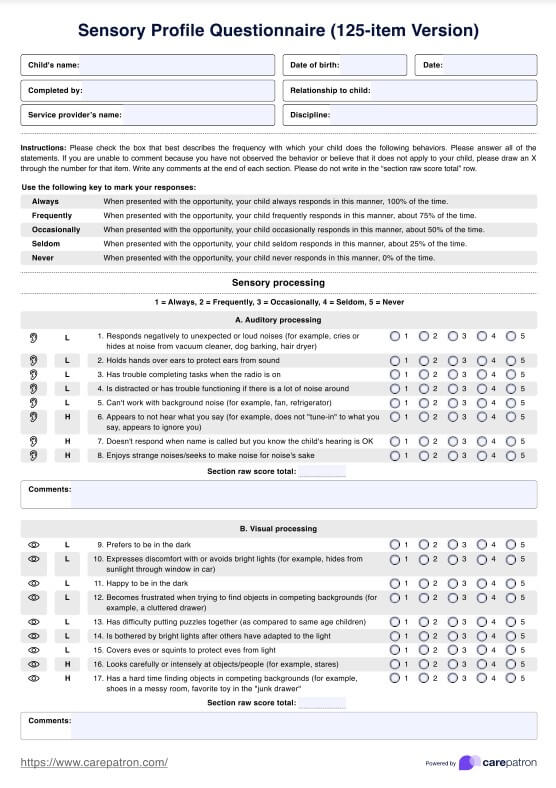The Sensory Profile Questionnaire assesses a child's sensory processing patterns and preferences, helping healthcare practitioners, educators, and families identify the child's strengths and challenges. This information can then be used to develop individualized intervention plans and accommodations to support the child in various settings.

Sensory Profile Questionnaire
Get access to a Sensory Profile Questionnaire for caregivers. Learn how to score this 125-item assessment to understand a child's sensory processing pattern.
Sensory Profile Questionnaire Template
Commonly asked questions
The Sensory Profile Questionnaire can be administered by a range of health and education professionals, including occupational therapists, speech and language pathologists, physical therapists, psychologists, counselors, special education teachers, and pediatricians. Parents and caregivers can also complete the questionnaire to provide valuable insights into their child's sensory processing.
The Sensory Profile Questionnaire is scored by tallying the caregiver's responses for each item and transferring these raw scores to a Summary Score Sheet. The Factor Grid and Section Summary on the sheet help summarize the child's scores into nine-factor groupings and plot section raw score totals, which healthcare practitioners can then use to identify sensory processing patterns, preferences, and areas that may require intervention.
EHR and practice management software
Get started for free
*No credit card required
Free
$0/usd
Unlimited clients
Telehealth
1GB of storage
Client portal text
Automated billing and online payments











